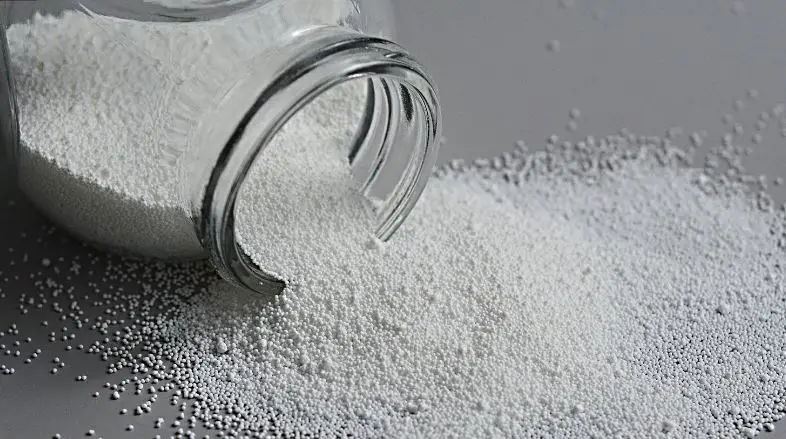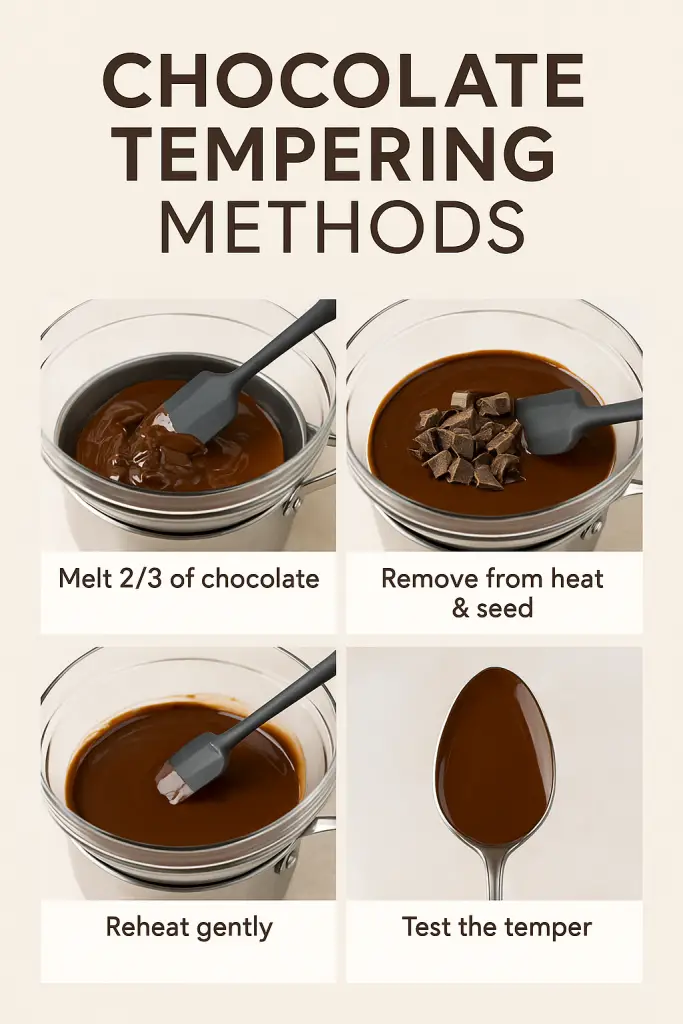If you’ve ever wondered what keeps store-bought bread from going moldy days after it’s baked, it’s likely calcium propionate doing the heavy lifting. Labeled as E282, this widely used food preservative is a favorite in commercial baking for one simple reason, it works. But what is calcium propionate exactly? How is it made? And why do so many bakeries depend on it?
This complete guide breaks it all down how it’s made, how it works, what it’s used for, and even what clean-label alternatives are available if you’re looking to go more natural.
What Is Calcium Propionate?
Calcium propionate is the calcium salt of propionic acid, with the chemical formula Ca(C₂H₅COO)₂. It usually comes in a white, odorless, crystalline powder form and has a few key properties that make it ideal for baking:
- Odorless – Unlike propionic acid, calcium propionate has no strong or unpleasant odor. While it’s typically odorless, a very faint scent might be detectable in bread.
- Water-soluble – Easily mixes into dough
- Heat-stable – Still effective after baking
It’s also 2 to 3 times more effective than natural mold-fighting ingredients like vinegar or lemon juice. That’s why it’s the go-to choice for preventing mold and bacterial spoilage in breads and baked goods.
How Is Calcium Propionate Made?
The production process is based on a simple neutralization reaction between propionic acid and a calcium compound like calcium hydroxide or calcium carbonate.
Ingredients:
- Propionic acid – Often derived from fossil fuels or via fermentation
- Calcium hydroxide (Ca(OH)₂) or Calcium carbonate (CaCO₃)
Reaction:
Propionic Acid + Calcium Hydroxide → Calcium Propionate + Water2C₂H₅COOH + Ca(OH)₂ → Ca(C₂H₅COO)₂ + 2H₂O
Final Steps:
The resulting solution is crystallized, dried, and milled into a fine powder. Impurities, like calcium lactate, are filtered out to ensure purity.
Fun Fact: A similar reaction happens naturally during the aging of Swiss cheese! The bacteria used in the process produce propionic acid, which gives the cheese its signature holes and flavor.
Why Do Bakeries Use Calcium Propionate?
For commercial bakeries, calcium propionate is a game-changer. It helps prevent spoilage without interfering with the dough’s rise or the bread’s taste. Here’s why it’s so widely used:
- Extends shelf life by 7–14 days by inhibiting mold, especially rope-forming bacteria like Bacillus mesentericus
- Doesn’t mess with yeast fermentation when used under 0.5%
- Extremely cost-effective – Around $1.25/kg, which works out to roughly 0.3 cents per loaf
- Works well with other preservatives like encapsulated sorbic acid to further boost shelf life
Common Uses:
- Packaged sandwich breads and rolls
- Tortillas, pitas, and flatbreads
- Some cakes and sweet baked goods (though used less in these applications)
Yes, regulatory agencies around the world approve its use, though it must be declared as an artificial preservative on food labels.
| Country | Max Allowable Level | Notes |
|---|
| USA (FDA) | 0.32% (of flour weight) | GRAS-listed (Generally Recognized As Safe) |
| EU (EFSA) | 0.3% (3000 ppm) | Approved as E282 |
| Canada | 0.2% (2000 ppm) | Higher for tortillas (0.4%) |
The Clean-Label Challenge
Even though calcium propionate is effective, more bakeries are exploring alternatives due to consumer demand for clean-label or all-natural products. But here’s the catch—natural options often fall short in performance or price.
Natural Alternatives:
- Cultured wheat or dextrose (fermented and acidified ingredients)
- Vinegar + honey blends (acidity + antimicrobial effects)
- Modified atmosphere packaging (vacuum-sealed with CO₂ or nitrogen)
Downsides:
- Typically cost 2–5 times more
- Offer shorter shelf life (3–7 days vs. 7–14 days)
- May require recipe reformulation or processing changes
Expert Baker Tips
- Use the right amount: Stick to 0.3–0.4% based on flour weight. Going over 0.5% can impact yeast activity.
- Mix evenly: Dissolve calcium propionate in water or blend with dry ingredients for even distribution.
- Pair it with other preservatives: For extended shelf life, combine with encapsulated sorbic acid.
- Watch your labels: Must be listed as an artificial preservative check local labeling laws.
- Don’t use in sourdough: It may interfere with the natural fermentation process.
- Great for humid environments: Especially useful in climates where mold grows quickly.
- Freeze for extended storage: Even with preservatives, freezing baked goods can prolong shelf life further.
- Optimize dough pH: Calcium propionate is most effective in mildly acidic conditions, especially below pH 5.5. Its preservative power drops in more neutral or alkaline doughs.
- Trial small batches first: If you’re adjusting a recipe, always test in small quantities before scaling up.
Calcium Propionate Frequently Asked Questions:
Calcium propionate is a white crystalline powder in granular form, it has a faint odor of propionic acid and can be more noticeable in packed bread depending on the amount used through the course of the shelf life.
Yes! This common bakery preservative is both vegan and dairy-free. Calcium propionate is synthetically produced without animal byproducts or milk derivatives, making it ideal for plant-based baking. Commercial bakeries use it widely to prevent mold in breads and pastries while keeping them fresh.
Some avoid it due to consumer preference for ‘clean label’ ingredients, not safety concerns. It’s FDA/CFIA/EFSA approved, but alternatives like sourdough work for shorter shelf-life products.
Unlike vinegar which impairs yeast at just 1% concentration, calcium propionate preserves full yeast activity up to 0.5% of flour weight safely above the bakery industry standard of 0.4%. At this dosage, it effectively inhibits mold for 7 days while maintaining neutral pH, unlike vinegar’s acidity which slows fermentation. This makes calcium propionate the preferred choice for commercial yeast-raised breads requiring extended shelf life without compromising dough performance.
It’s synthetically produced, though identical to propionic acid found naturally in Swiss cheese. The manufactured version ensures purity and consistent performance in baking.
For a clean-label alternative to calcium propionate, cultured wheat is the top choice. This fermented ingredient naturally produces mold-inhibiting acids while maintaining yeast activity, typically extending shelf life 5-7 days when used at 1-3% of flour weight, and can be simply labeled as “fermented wheat” to meet consumer demand for recognizable ingredients in artisan and commercial baking applications.
Yes, but at 20% lower efficacy due to GF flours’ higher moisture. Combine with 0.5% vinegar for comparable results to wheat bread.
Common causes: under-dosing (<0.1%), high humidity storage, or contamination during slicing/packaging. Always pair with proper sanitation.
Most commercial bakeries rely on calcium propionate (0.1–0.4% flour weight) paired with encapsulated sorbic acid (0.05–0.2%) for optimal mold inhibition. This combination extends shelf life 10–14 days by targeting different spoilage pathways: propionate disrupts mold metabolism, while sorbic acid (in encapsulated form to avoid yeast inhibition) prevents late-stage fungal growth.




Leave a Reply